Project 1 – Icicle
Concept
This project involves the fabrication of ‘polluted’ icicles based on the amount of traffic in proximity. Pure water is trickled out from a container at regular intervals, while passing vehicles cause darkened water to be dispensed and pollute the icicle. The project explores how we can visualize information though physical fabrication and also hopes to raise questions about how our presence impacts upon nature.
Background
Being a new resident of Pittsburgh and experiencing for the first time in my life a lot of snow, I was struck by how beautiful the fresh white snow can appear. I was also impressed by the beauty and temporal nature of the icicles that formed in the cold weather. At the same time, I also noticed how quickly the snow darkened at the side of the road as vehicles pass by.
For this project I was interested in exploring how fabrication could be used as a form of visualization. Digital Fabrication usually means, creating some kind of digital model, then outputting it to a given fabrication device such as a 3D printer, milling machine, or a laser cutter. In general, I am interested in exploring how we can ‘unify’ this process more so that realtime factors contribute to the fabrication process, i.e. the input more closely affects the output. An icicle for example, forms in an incremental process when water flows then refreezes repeatedly. Nature has no prior design for the icicle, but rather its form is derived from the process. This project is one small step towards exploring this bigger idea.
Some Related Artworks
Marco Evaristti, Ice Cube Project, 2004. From Wikipedia:
With two icebreakers and a twenty-man crew, Evaristti used three fire hoses and 3,000 litres (790 US gallons) of paint to color the iceberg blood-red. The artist commented that, “We all have a need to decorate Mother Nature because it belongs to all us.”
Although a very simple idea, it immediately communicates a powerful ‘open’ message. This could be commentary on whaling, general environmentalism, or even protesting a war. The juxtaposition of blood red, with pure white is strongly out of place.
icicledrops, tEnt, 2006
We have developed the device which “invites/induces” natural icicles. Our device is composed of two parts- a pot and a string. A pot can preserve snows, control ices, and make a drop of water. A drop of water freezes again by an electronic-controlled cold string during trickling down. The accumulation of iced strings grows up to a big icicle.
8 LEDs which is attached to a string light up an icicle from inside. Light flickers like virtual drops, and generates new optical phenomena. Real water drops generate poly-rhythmic percussive sounds.
Using the above technique they can create icicles artificially regardless of the environment. What is really beautiful, especially in the top image below, is the way the icicles have been illuminated. They don’t look at this work as a ‘fabrication’ experiment, but rather an exploration of the aesthetics of icicles.
Prototype
Here is an overview of how the prototype works.
The water is released using a gravity feed solenoid valve. Its regular state is closed, so by turning an Arduino pin on HIGH for 100ms or so it will quickly open and close, releasing a dribble of water.
Here you can see the two valves attached to the bottom of the water containers.
The solenoid valves are controlled by a very simple circuit: a Boarduino and some transistors to deliver the 12VDC to the solenoid.
A photo-resistor is used to detect cars passing by. As icicles are made overnight when the temperature drops, it is easy to detect the jump in light levels when a vehicle with headlights switched on passes by.
To get an idea of how many vehicles were passing by on my street I made a small program to record the time and light level reading overnight.
I live on a reasonably quiet street, so there is not a constant stream of vehicles going by. You can see that between 2am – 5am it is pretty quiet, but from 6am it really picks up as people start their day. I also recorded the temperature on a given night, and was surprised at how little it changes. Granted the values below are rounded to the nearest integer, I still expected a more dramatic change.
From the image and movie below you get an idea you get an idea for how the icicle would form from the dripping water in the right weather conditions.
Trials
The next stage was to do a trial, and try and ‘fabricate’ an icicle. Surprisingly, there is such a thing as black food coloring, which serves the purpose of polluting the icicle every time a vehicle passes by.
When you drop some full strength coloring into the water it creates an interesting effect.
Here are the containers, one clear and one dirty.
As reliably cold as Pittsburgh’s weather has been over the first half of January, it appears that we are experiencing a ‘warm patch’. After leaving the device out overnight, I awoke to find nothing but a puddle of dirty water. The temperature was supposed to come down to -2C, but the lowest reported temperature I noticed was 3C. If anything, it is clear that the sensing/actuating device is working as the water has been polluted by the vehicles going by.
Reflection
After several more attempts, Pittsburgh’s weather just hasn’t been cold enough to go below freezing. Unfortunately I am away at a conference for the last week of this project, so it is frustrating to see it is going to dip below freezing during that time!
I have several improvements I would like to make to the device, thanks to suggestions from people in class. Firstly make the point where the drips form curve to a vertical. This should slow down the drops to allow them to freeze easier. Secondly, another suggestion was to attach some sort of freezer-made piece of ice to the dripping tip, in order to get the icicle started. I am hoping to try this out when I get back.
The most disappointing thing about not being able to form the icicles, is not being able to see how the ‘data’ would form a visualization. For example, would small black patches form? Or would layers of clear and dark ice build up over time? These patterns would be interesting to observe and also try and accentuate by varying the mixtures and release rates.
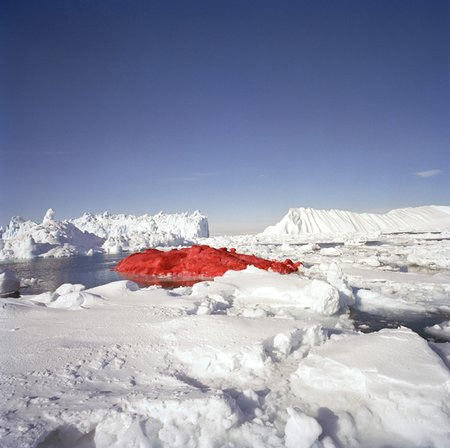
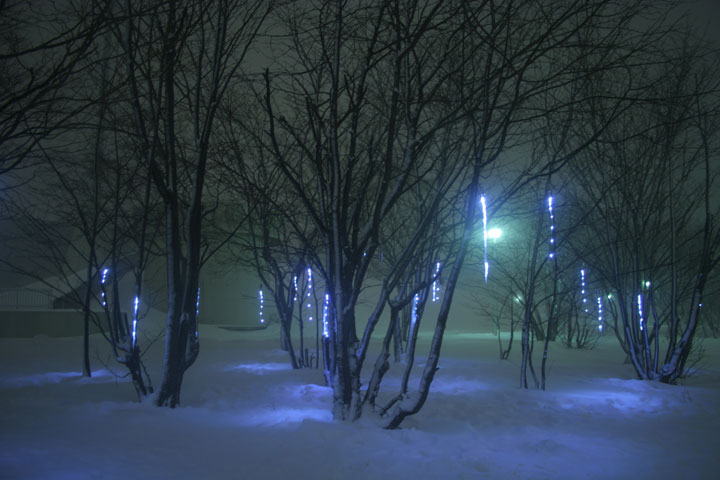
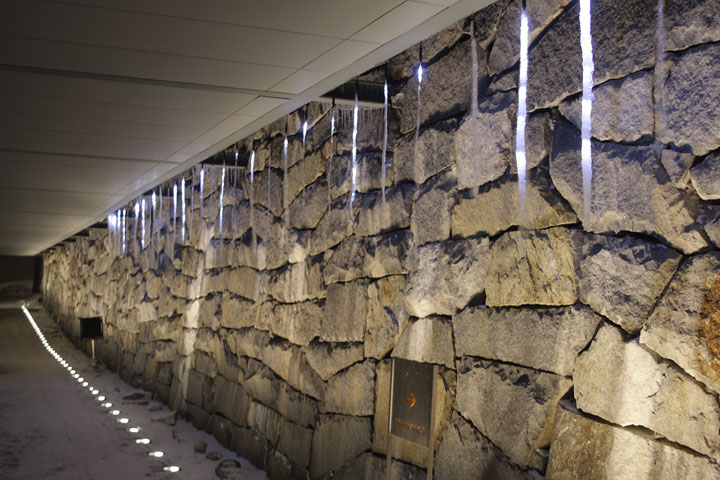
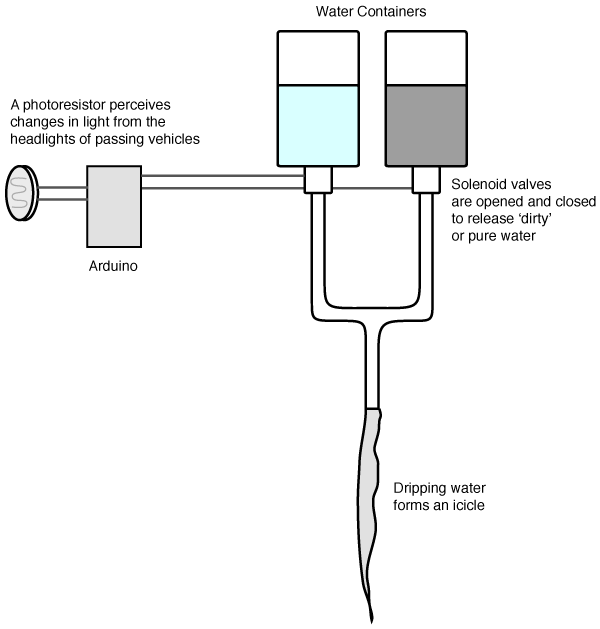
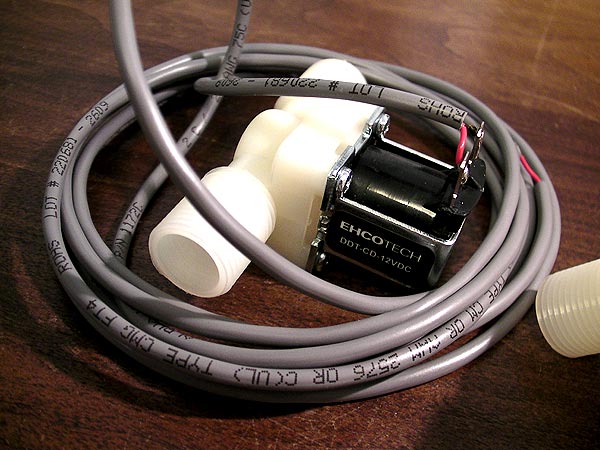
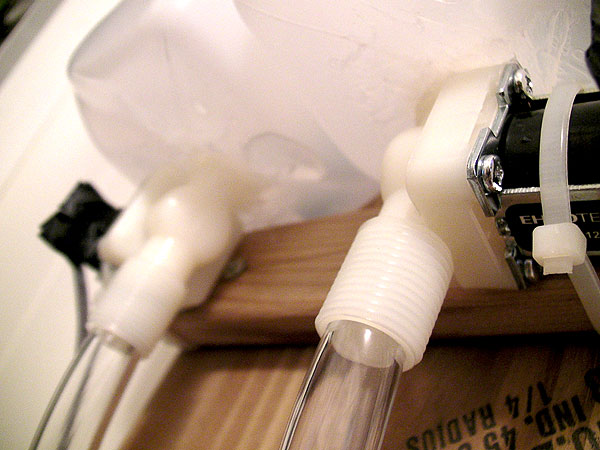
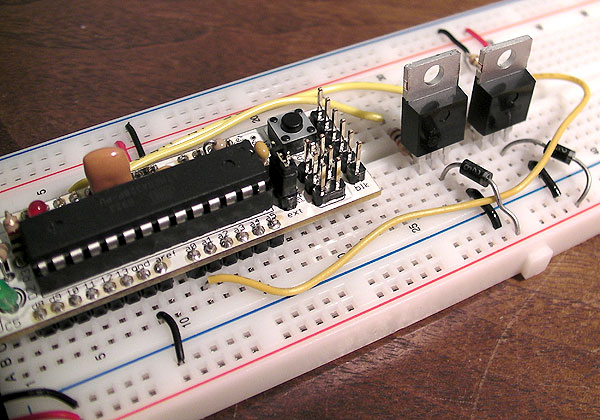
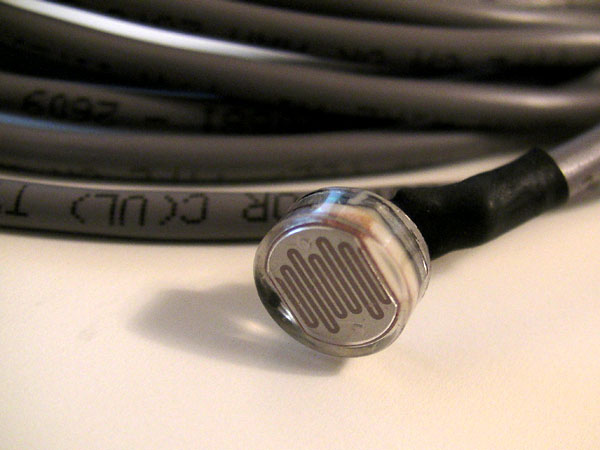
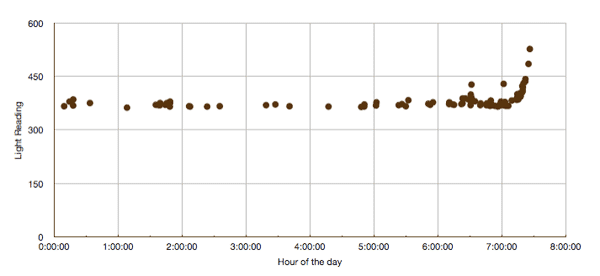
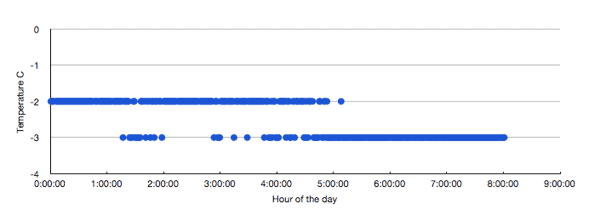
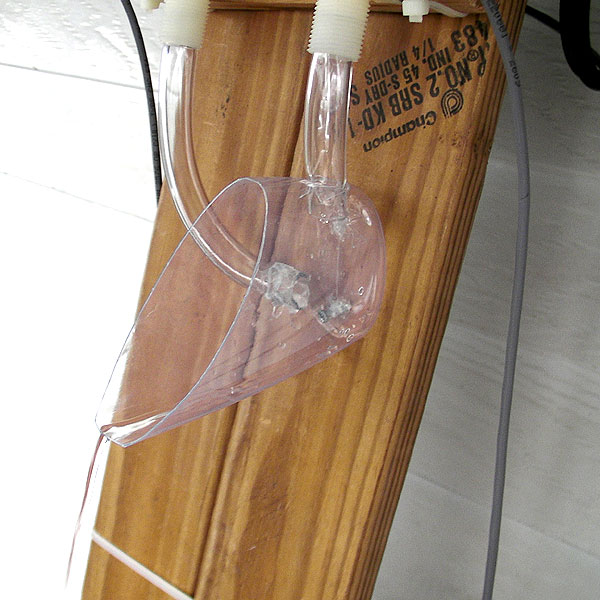

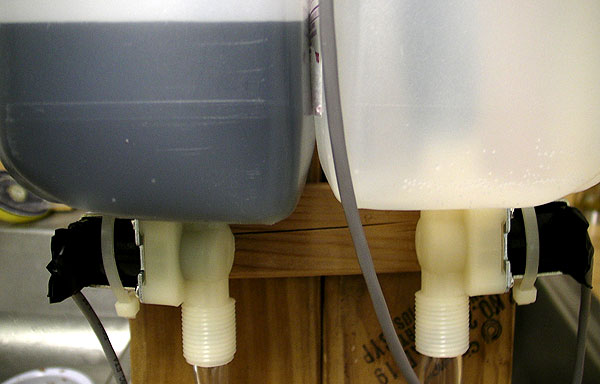
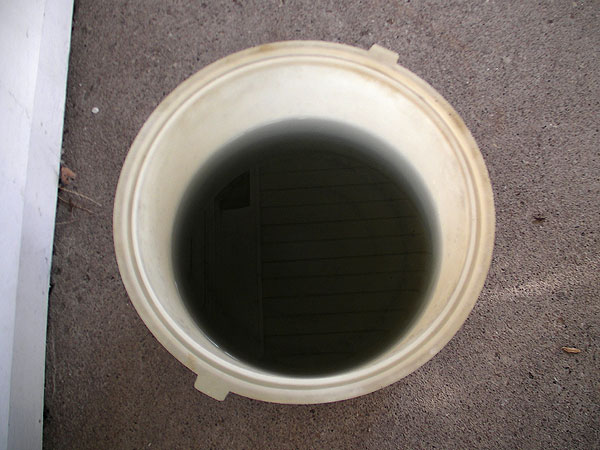
Hi Karl, here are the notes from the PiratePad from the crit.
—————————–
Lovely web documentation. You did a lot of work on the physical end of things… but did you do the right work? The black dye strikes me as an unnecessary and confounding complication. It might also have helped to do (or present) some research about icicle formation…
Beautiful idea, painful, painful execution. 🙂 Can you use a material besides water with a higher freezing temperature that still freezes clear? There *must* be a better solution than waiting for the temperature to drop. Or did you think that’d hurt the authenticity of it? Oh, and we should chat about that car detection hardware/algorithm. 🙂 -SB
Is there a way to keep the water in the containers from freezing? Might be interesting to try to set this up inside of a freezer, with the tanks positioned outside of the freezer.
Yeah, along with the first comment I’m wondering if there’s another material that will yield a similar effect but be perhaps more permanent than an icicle as well. Especially when I envision this in some kind of exhibit that’s like art and environmental awareness — I think seeing pollution visualized this way would definitely have an impact on people, but you’d have to have something that can stand up to being displayed. The use of icicles from water also seems a bit counterintuitive for me because icicles melt but air pollution changes our environment forever — so I think your message would be stronger if your artifacts didn’t just melt.
Hehe, it’s like a mad scientist project–Beautiful idea though. I agree with the other comments though: I wonder if you could’ve displayed the data you collected maybe with *digital* icicles (although I also agree that there is something enchanting in the idea of creating your own icles). I’m still not exactly sure what data your trying to portray here–how does the freqency of passing cars show information of pollution? Maybe you could have collected data on polution and then used that. Keep making icicles though! Really cool! -Amanda
I LOVE this idea of making a physical visualiztion of the “pollution” in your street. really wish it had worked
Wouldn’t most of the icicles be similar ‘dirtiness’?
Can’t you gather the data first and then make the ice in a more controlled environment (with constant temperature)?
Something Karl told us about in our small group was that using the car traffic as a data source was intended to have an interesting side effect of a sort of chronological record of the pollution/unique data source. (like bands of pollution along the icicle as it freezes over time) — nvm, he talked about this at the end
Really, really interesting idea…I hope you give it another shot! Maybe you could keep the tanks inside your house, and feed the tubes out the window.